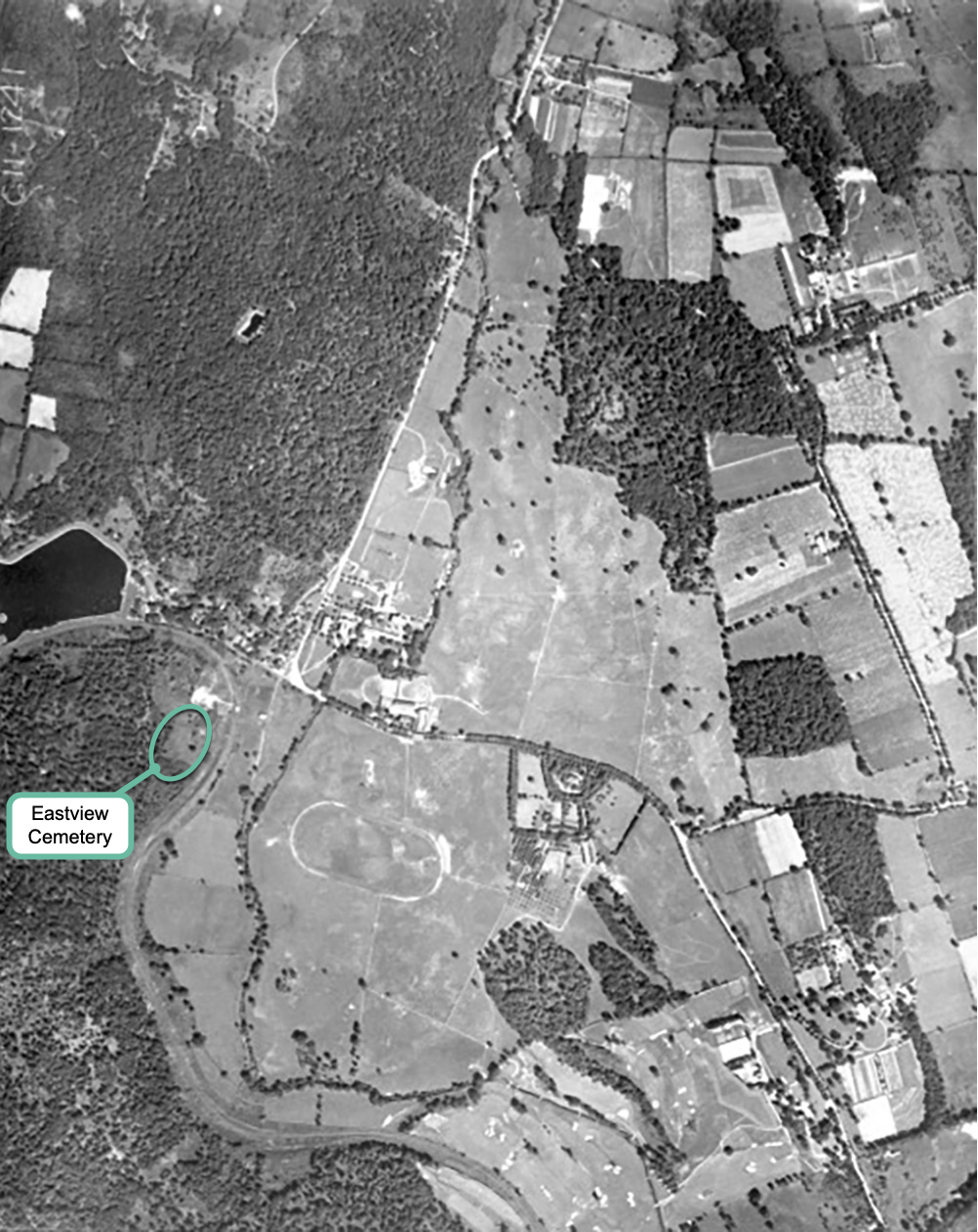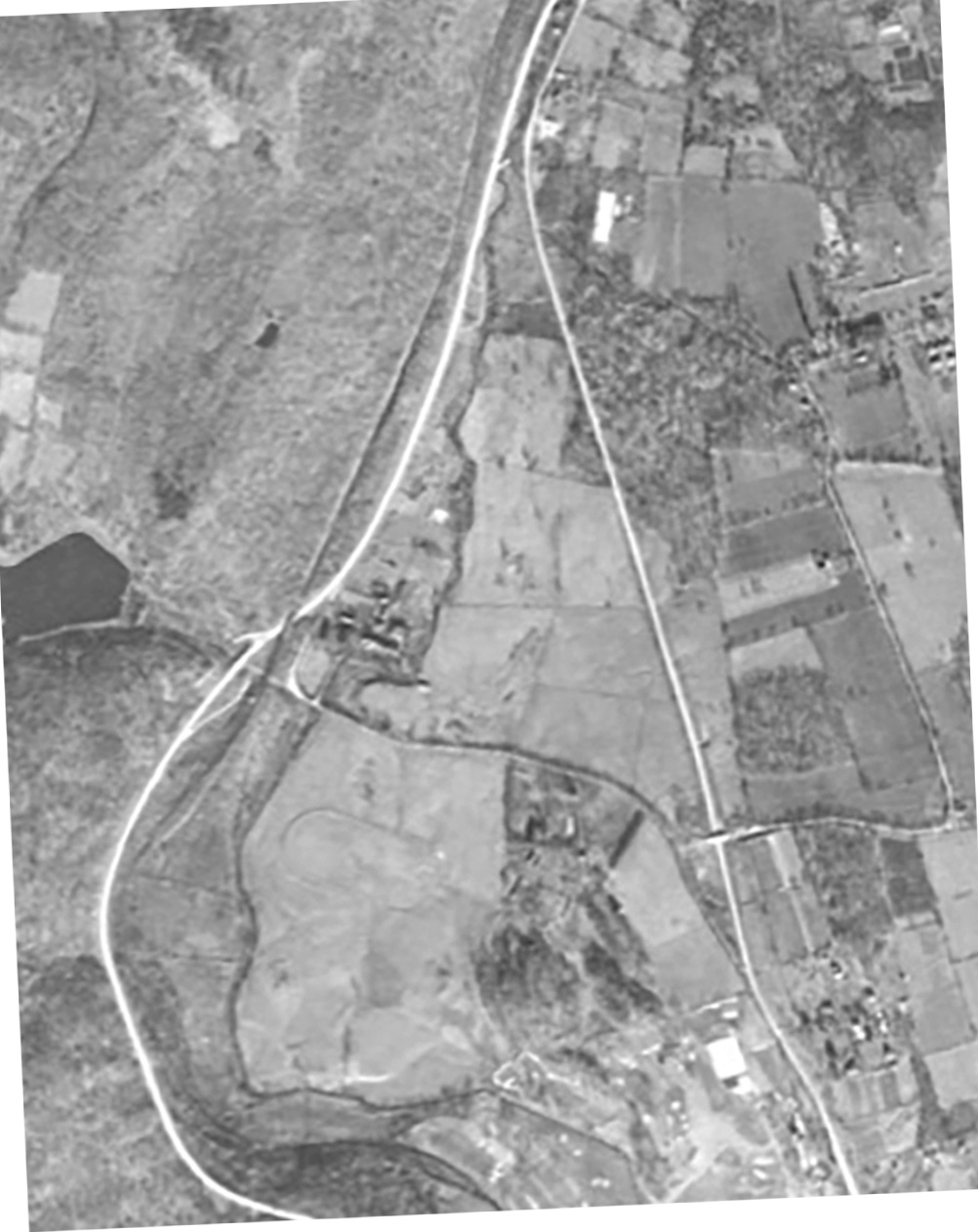

A 1940 map of the Eastview area overlaid on a 1925 map of the same area show exactly how the Saw Mill Parkway was paved over the Eastview Almshouse Cemetery.
SAW MILL RIVER PARKWAY TRAFFIC ROLLS ON GRAVES OF PAUPER DEAD
Only one headstone remains standing at County’s Old Burial Ground at East View, ploughed under for highway improvement.
BY CYNTHIA LOWRY
EAST VIEW, Nov. 14. The purring wheels of modern automobiles traveling the Saw Mill River Parkway here pass over the graves of dozens of paupers. One headstone remains standing, ghost-white against the brown hillside, a silent marker of a Westchester Potter’s Field which made way for the needs of the day.
The small cemetery was the burial place for inmates of the County Home who were without family or had no other place in which to be interred. It was a small plot of land at the East View Station. The potter’s Field was in use for over 100 years, but was not used after the county acquired a new cemetery near Grasslands Hospital. The last burial was made there around 1920.
The burial ground was flat, so when the land was taken to build the parkway, the graves were covered with about 20 feet of dirt, and the Saw Mill River Parkway runs along on a ridge high above the graves. None of the graves were disturbed in the construction last year.
Francesco Servello, a one-time inmate of the County Home, was one of many buried there. His is the only grave which was not disturbed, and, with its simple fieldstone cross, stands like a neglected sentinel beside the parkway.
But Francesco Servello has not been forgotten, for once a year someone — no one at the County Home knows who it is — comes to the grave and puts flowers on it. Now, the spot is bleak and uncared for, with dead palm branches lying across it, and a stick from which once floated a small flag.
To get to the grave, one must either climb the wooden rail along the Parkway, or climb a barbed wire fence by the railroad tracks, and walk along the sharp brambles to the lonely marker.
According to Peter Makulov, an employee of the County home since 1915, the graves were all marked with either fieldstone or wooden crosses.
The Herald Statesman, Yonkers, NY, November 14, 1936, Page 12




